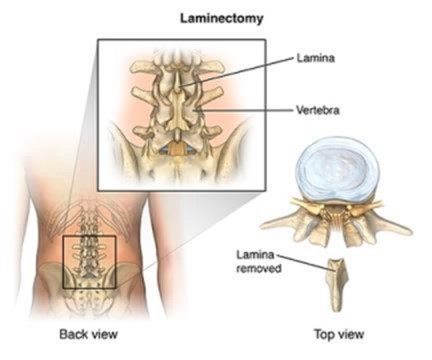A nursing is planning care for an adolescent who is postoperative following scoliosis repair with Harrington rod instrumentation. Which of the following interventions should the nurse include in the plan of care?
Place the client in protective isolation.
Initiate the use of a PCA pump for pain control.
Keep the head of the bed at a 30° angle.
Reposition the client by log rolling every-4 hr.
The Correct Answer is D
A. Protective isolation is not routinely required for clients following scoliosis repair unless there is an underlying infection risk.
B. A PCA pump may be used for pain control, but it is not specific to post-scoliosis repair care.
C. Keeping the head of the bed at 30° is not required; positioning should focus on spinal alignment.
D. Log rolling the client every 4 hours is essential to maintain spinal alignment, prevent complications, and ensure safety following Harrington rod instrumentation.
Nursing Test Bank
Naxlex Comprehensive Predictor Exams
Related Questions
Correct Answer is A
Explanation
A. Hematuria: This is the correct answer. Hematuria, which is the presence of blood in the urine, can be a common complication of pelvic fractures. This occurs due to the potential injury to the bladder or other structures within the pelvis. Monitoring for hematuria is crucial in assessing potential internal injuries and ensuring appropriate management.
B. Impaired taste: Impaired taste is not typically associated with pelvic fractures. It is more likely related to conditions involving the sense of taste or other unrelated factors. It is not a common complication of pelvic fractures.
C. Diarrhea: Diarrhea is not a common complication of pelvic fractures. It is more likely to be caused by gastrointestinal issues, infections, dietary factors, or other medical conditions. It is not directly related to pelvic fractures or their complications.
D. Increased thirst: Increased thirst is not a common complication of pelvic fractures. It may be related to various factors such as dehydration, certain medical conditions like diabetes, or side effects of medications. It is not a direct consequence of pelvic fractures or their associated complications.
Correct Answer is B
Explanation
A. Positioning the client in a high-Fowler's position if clear drainage is noted on the dressing is not a specific intervention for a laminectomy with spinal fusion. The nurse should follow the surgeon's specific postoperative orders regarding positioning and wound care.
B. Monitoring sensory perception of the lower extremities is a crucial nursing intervention after a laminectomy with spinal fusion. This is to assess for any signs of neurovascular compromise or nerve damage.
C. Assisting the client into the knee-chest position to manage postoperative discomfort is not a recommended position after a laminectomy with spinal fusion. The nurse should follow the surgeon's specific postoperative orders regarding positioning.
D. Maintaining strict bed rest for the first 48 hours postoperative is not typically indicated after a laminectomy with spinal fusion. Early mobilization and ambulation are often encouraged to prevent complications and promote recovery. The nurse should follow the surgeon's specific postoperative orders regarding activity and mobility.

Whether you are a student looking to ace your exams or a practicing nurse seeking to enhance your expertise , our nursing education contents will empower you with the confidence and competence to make a difference in the lives of patients and become a respected leader in the healthcare field.
Visit Naxlex, invest in your future and unlock endless possibilities with our unparalleled nursing education contents today
Report Wrong Answer on the Current Question
Do you disagree with the answer? If yes, what is your expected answer? Explain.
Kindly be descriptive with the issue you are facing.
